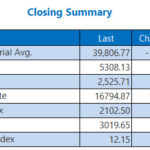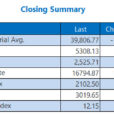
The election of Ronald Reagan in 1980 provides the best recent precedent for the unexpected triumph of Donald Trump (in my opinion, the other post-war Republican takeovers of the White House –Ike in ’52, Nixon ’68, and W. in ’00 – did not constitute a real break from the status quo.) As many people expect great changes from Trump, it is worthwhile to look at what the Reagan Revolution actually wrought.
Both Reagan and Trump were better known to many as entertainers rather than politicians, both came from outside the Republican mainstream, and both engineered hostile takeovers of the Party. During the 1970s, the Republican Party was dominated by “Rockefeller Republicans,” the Ivy League-educated liberal Eastern elites. Reagan was the Western heir apparent to Barry Goldwater, the deeply conservative standard-bearer who went down in flames in 1964. In 1976, the brash Reagan had the nerve to challenge incumbent Republican President Gerry Ford in the primary, thereby weakening him in the general election, which he ultimately lost to Jimmy Carter. While Reagan was simply too conservative for the Rockefeller wing, Trump’s various positions are similarly inconsistent with much of the mainstream neo-conservative orthodoxy. Both candidates also capitalized on a weak economy as a catalyst to encourage voters to cross traditional party lines. Many of the rust belt ”Reagan Democrats” came home to Trump.
While books have been written about the cultural and political legacy of Reagan’s presidency, harder facts can be found in his budgetary record. Despite the economic revival that his tax-cutting and deregulation tendencies delivered, the national debt ballooned as it never had for any other peacetime President. Although the fiscal imbalances have gotten significantly worse since Reagan left office, the Gipper gave plenty of cover for future Republican presidents to run up red ink. President Donald Trump, the self-proclaimed “King of Debt”, now appears to be perfectly positioned to test the limit of how much debt the world’s largest economy can issue.
Leading up to the election of 1980, Reagan and the conservative economists who supported him, warned that Federal debt, which had risen to approximately 26% of GDP, had grown too heavy to bear (data from Congressional Budget Office, July 2010) Reagan brought the spirit of Milton Friedman into the Oval Office, and his campaign was based on a clear intention to roll back the nearly 50 years of socialist government expansion that had occurred since Roosevelt’s New Deal.
But when Reagan came to Washington he was confronted by a strong Democratic majority in the House of Representative led by House Speaker Tip O’Neill, a skillful and forceful defender of big government. Reagan soon discovered that the political price was always very high when government expenditures are being restricted. And so, Reagan decided to move on the tax cuts (a perennial political winner) but never really got around to the spending cuts. As a result, the 26% debt to GDP ratio that he inherited when he came into office expanded to 41% by the time he left. (data from Congressional Budget Office, July 2010) This was not the complete conservative victory for which his backers had hoped.
Trump comes to office with similar expectations for significant changes. The good news for him is that he will face far fewer restrictions than Reagan had to face. Most importantly, both houses of Congress are now Republican. The Supreme Court is currently split along ideological lines but is likely to swing conservative after Trump’s appointment to the open Scalia seat.














